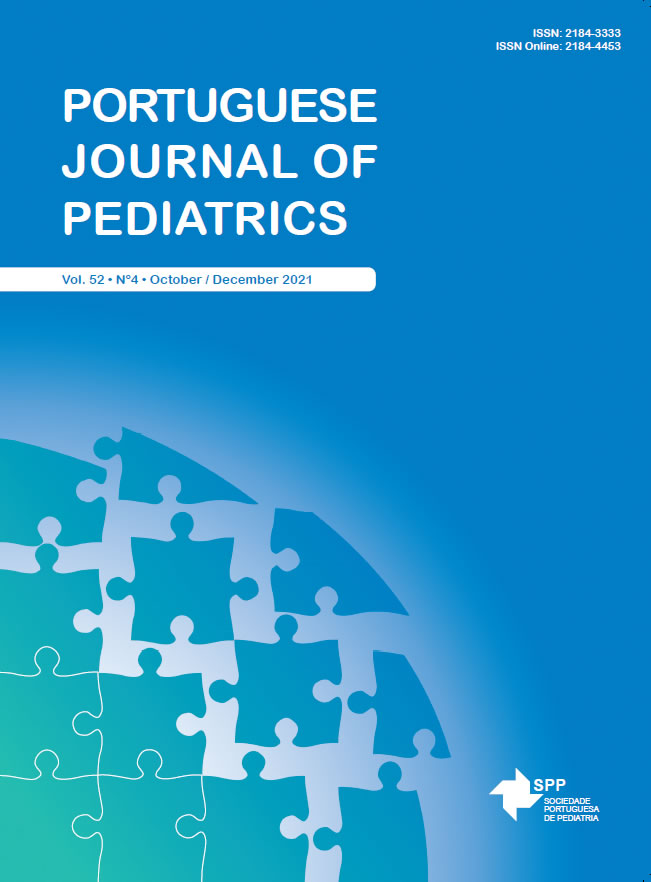Fluid Therapy in Perioperative Setting in Children
Date of submission: 27-12-2020 | Date of acceptance: 29-04-2021 | Published: 03-10-2021
DOI:
https://doi.org/10.25754/pjp.2021.21917Abstract
Background The composition of the ideal fluid for children is not standardized and there is a wide variation in clinical practice. To study the safety and impact of routinely used fluids in the electrolyte and acid-base balance.
Methods We conducted an exploratory, prospective, randomised, controlled trial of children aged between 28 days and 17 years undergoing elective surgery in a tertiary care university affiliated hospital in Portugal. Children received either 0.45% saline solution, 0.9% saline solution or Plasma-Lyte. Blood samples were obtained in three different moments: baseline, at the end of the surgery and in the morning after surgery. The main outcome was to evaluate the safety and efficacy of Plasma-Lyte.
Results 65 children were studied with a median age of 10.0 years and a predominance of male gender (78%). On the third sample, 0.45% saline group presented lower sodium values (p=0.004) and the 0.9% saline group more negative base excess values (p=0.035). In 0.9% saline group chloride values increased over time (p=0.003) and median base excess in the second sample was within the acidosis range: -2,45 (-3.78,-0.18)mmol/L. There were very few electrolyte and acid-base disorders and none of clinical significance.
Discussion and conclusion This trial demonstrated that the perioperative fluids studied were all safe. 0.45% saline solution was associated with lower sodium values and 0.9% saline solution with more negative base excess. However, the differences between groups were small, without important electrolyte disorders. In healthy children all three solutions can be used, depending on costs, availability and local policy.
Downloads
Downloads
Published
Issue
Section
License

This work is licensed under a Creative Commons Attribution-NonCommercial-NoDerivatives 4.0 International License.









